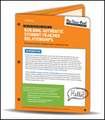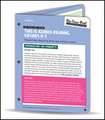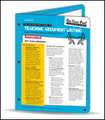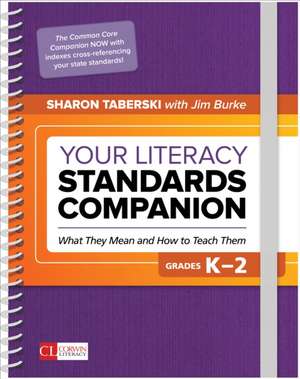Your Literacy Standards Companion, Grades K-2: What They Mean and How to Teach Them: Corwin Literacy
Autor Sharon D. Taberski, James R. Burkeen Limba Engleză Spirală – 21 iun 2020
Din seria Corwin Literacy
-
 Preț: 285.18 lei
Preț: 285.18 lei -
 Preț: 158.08 lei
Preț: 158.08 lei -
 Preț: 278.39 lei
Preț: 278.39 lei -
 Preț: 243.82 lei
Preț: 243.82 lei -
 Preț: 244.25 lei
Preț: 244.25 lei -
 Preț: 88.42 lei
Preț: 88.42 lei -
 Preț: 273.64 lei
Preț: 273.64 lei -
 Preț: 274.70 lei
Preț: 274.70 lei -
 Preț: 157.08 lei
Preț: 157.08 lei -
 Preț: 280.29 lei
Preț: 280.29 lei -
 Preț: 284.26 lei
Preț: 284.26 lei -
 Preț: 294.79 lei
Preț: 294.79 lei -
 Preț: 281.36 lei
Preț: 281.36 lei -
![Mindsets and Moves: Strategies That Help Readers Take Charge [Grades K-8]](https://i3.books-express.ro/bs/9781506314938/mindsets-and-moves.jpg) Preț: 156.17 lei
Preț: 156.17 lei -
 Preț: 283.27 lei
Preț: 283.27 lei -
 Preț: 88.42 lei
Preț: 88.42 lei -
 Preț: 281.94 lei
Preț: 281.94 lei -
 Preț: 280.29 lei
Preț: 280.29 lei -
 Preț: 278.64 lei
Preț: 278.64 lei -
 Preț: 267.50 lei
Preț: 267.50 lei -
 Preț: 226.80 lei
Preț: 226.80 lei -
 Preț: 270.76 lei
Preț: 270.76 lei -
 Preț: 267.70 lei
Preț: 267.70 lei -
 Preț: 278.10 lei
Preț: 278.10 lei -
 Preț: 245.45 lei
Preț: 245.45 lei -
 Preț: 230.63 lei
Preț: 230.63 lei -
 Preț: 272.62 lei
Preț: 272.62 lei -
![Every Minute Matters [Grades K-5]: 40+ Activities for Literacy-Rich Classroom Transitions](https://i4.books-express.ro/bs/9781544382449/every-minute-matters-grades-k-5.jpg) Preț: 218.58 lei
Preț: 218.58 lei -
 Preț: 274.00 lei
Preț: 274.00 lei -
![Flash Feedback [Grades 6-12]: Responding to Student Writing Better and Faster – Without Burning Out](https://i4.books-express.ro/bs/9781544360492/flash-feedback-grades-6-12.jpg) Preț: 232.71 lei
Preț: 232.71 lei -
 Preț: 88.67 lei
Preț: 88.67 lei -
 Preț: 180.48 lei
Preț: 180.48 lei -
 Preț: 273.44 lei
Preț: 273.44 lei -
 Preț: 173.02 lei
Preț: 173.02 lei -
 Preț: 88.67 lei
Preț: 88.67 lei -
 Preț: 236.11 lei
Preț: 236.11 lei -
 Preț: 236.11 lei
Preț: 236.11 lei -
 Preț: 256.83 lei
Preț: 256.83 lei -
 Preț: 291.04 lei
Preț: 291.04 lei -
 Preț: 273.44 lei
Preț: 273.44 lei -
 Preț: 184.56 lei
Preț: 184.56 lei -
 Preț: 174.52 lei
Preț: 174.52 lei -
 Preț: 275.92 lei
Preț: 275.92 lei -
 Preț: 140.61 lei
Preț: 140.61 lei -
 Preț: 278.10 lei
Preț: 278.10 lei -
![Comprehension [Grades K-12]: The Skill, Will, and Thrill of Reading](https://i3.books-express.ro/bs/9781071812839/comprehension-grades-k-12.jpg) Preț: 287.79 lei
Preț: 287.79 lei -
 Preț: 247.10 lei
Preț: 247.10 lei -
 Preț: 277.50 lei
Preț: 277.50 lei -
 Preț: 273.44 lei
Preț: 273.44 lei
Preț: 288.67 lei
Nou
Puncte Express: 433
Preț estimativ în valută:
55.24€ • 57.60$ • 45.91£
55.24€ • 57.60$ • 45.91£
Carte disponibilă
Livrare economică 27 februarie-13 martie
Preluare comenzi: 021 569.72.76
Specificații
ISBN-13: 9781506386829
ISBN-10: 1506386822
Pagini: 376
Dimensiuni: 216 x 279 x 30 mm
Greutate: 0.9 kg
Ediția:1
Editura: SAGE Publications
Colecția Corwin
Seria Corwin Literacy
Locul publicării:Thousand Oaks, United States
ISBN-10: 1506386822
Pagini: 376
Dimensiuni: 216 x 279 x 30 mm
Greutate: 0.9 kg
Ediția:1
Editura: SAGE Publications
Colecția Corwin
Seria Corwin Literacy
Locul publicării:Thousand Oaks, United States
Recenzii
"These books provide clear guidance on instructional practices and intentionality of conversations as well as thorough articulation of the intent of the standards. I feel that these will be an asset that our teachers are craving as they are working in developing confident, proficient readers and writers that are prepared for the classroom and beyond."
Cuprins
Preface
Introduction: Turning Standards Into Daily Teaching
Quick Reference: Common Core State Standards, K–12 English Language Arts
Key Principles and Additional Teaching Strategies for English Language Learners K–2
Indexes Cross-Referencing Your State Standards
The Complete Common Core State Standards: Decoded
Part 1. Reading
Key Ideas and Details
1. Read closely for explicit meaning . . . make logical inferences . . . cite textual evidence
2. Determine central ideas . . . analyze their development . . . summarize key details
3. Analyze how and why individuals, events, and ideas develop and interact
Craft and Structure
4. Interpret words and phrases as they are used . . . and shape meaning or tone
5. Analyze the structure of texts, including specific elements and sections
6. Assess how point of view or purpose shapes the content and style of a text
Integration of Knowledge and Ideas
7. Integrate and evaluate content presented in diverse media and formats
8. Delineate and evaluate the argument and specific claims, including the validity
9. Analyze how two or more texts address similar themes or topics
Range of Reading and Level of Text Complexity
10. Read and comprehend complex literary and informational texts
Part 2. Reading: Foundational Skills
Print Concepts
1. Demonstrate understanding of the organization and basic features of print
Phonological Awareness
2. Demonstrate understanding of spoken words, syllables, and sounds (phonemes)
Phonics and Word Recognition
3. Know and apply grade-level phonics and word analysis skills in decoding words
Fluency
4. Read with sufficient accuracy and fluency to support comprehension
Part 3. Writing
Text Types and Purposes
1. Write arguments to support claims . . . using valid reasoning and . . . evidence
2. Write informative/explanatory texts to examine and convey complex ideas
3. Write narratives to develop real or imagined experiences or events
Production and Distribution of Writing
4. Produce clear and coherent writing (begins in grade 3)
5. Develop and strengthen writing . . . by planning, revising, editing, rewriting
6. Use technology . . . to produce and publish writing and to interact and collaborate
Research to Build and Present Knowledge
7. Conduct short as well as more sustained research projects
8. Gather relevant information from multiple . . . sources . . . avoiding plagiarism
9. Draw evidence from . . . texts to support analysis, reflection, and research Range of Writing (begins in grade 4)
10. Write routinely . . . for a range of tasks, purposes, and audiences (begins in grade 3)
Part 4. Speaking and Listening
Comprehension and Collaboration
1. Prepare for and participate in . . . conversations and collaborations
2. Integrate and evaluate information presented in diverse media and formats
3. Evaluate a speaker’s point of view, reasoning, and use of evidence and rhetoric
Presentation of Knowledge and Ideas
4. Present information, findings, and supporting evidence
5. Make strategic use of digital media and visual displays of data
6. Adapt speech to a variety of contexts . . . demonstrating command of formal English
Part 5. Language
Conventions of Standard English
1. Demonstrate command of the conventions of standard English grammar and usage
2. Demonstrate command of the conventions of standard English capitalization, punctuation, and spelling
Knowledge of Language
3. Apply knowledge of language to understand how language functions
Vocabulary Acquisition and Use
4. Determine or clarify the meaning of unknown . . . words and phrases
5. Demonstrate understanding of figurative language, word relationships . . . nuances
6. Acquire and use . . . general academic and domain-specific words and phrases
Resources
Resource A. Common Core Recommended Reading Lists
Resource B. Text Complexity Tool
Resource C. Planning Calendar Templates
Introduction: Turning Standards Into Daily Teaching
Quick Reference: Common Core State Standards, K–12 English Language Arts
Key Principles and Additional Teaching Strategies for English Language Learners K–2
Indexes Cross-Referencing Your State Standards
The Complete Common Core State Standards: Decoded
Part 1. Reading
Key Ideas and Details
1. Read closely for explicit meaning . . . make logical inferences . . . cite textual evidence
2. Determine central ideas . . . analyze their development . . . summarize key details
3. Analyze how and why individuals, events, and ideas develop and interact
Craft and Structure
4. Interpret words and phrases as they are used . . . and shape meaning or tone
5. Analyze the structure of texts, including specific elements and sections
6. Assess how point of view or purpose shapes the content and style of a text
Integration of Knowledge and Ideas
7. Integrate and evaluate content presented in diverse media and formats
8. Delineate and evaluate the argument and specific claims, including the validity
9. Analyze how two or more texts address similar themes or topics
Range of Reading and Level of Text Complexity
10. Read and comprehend complex literary and informational texts
Part 2. Reading: Foundational Skills
Print Concepts
1. Demonstrate understanding of the organization and basic features of print
Phonological Awareness
2. Demonstrate understanding of spoken words, syllables, and sounds (phonemes)
Phonics and Word Recognition
3. Know and apply grade-level phonics and word analysis skills in decoding words
Fluency
4. Read with sufficient accuracy and fluency to support comprehension
Part 3. Writing
Text Types and Purposes
1. Write arguments to support claims . . . using valid reasoning and . . . evidence
2. Write informative/explanatory texts to examine and convey complex ideas
3. Write narratives to develop real or imagined experiences or events
Production and Distribution of Writing
4. Produce clear and coherent writing (begins in grade 3)
5. Develop and strengthen writing . . . by planning, revising, editing, rewriting
6. Use technology . . . to produce and publish writing and to interact and collaborate
Research to Build and Present Knowledge
7. Conduct short as well as more sustained research projects
8. Gather relevant information from multiple . . . sources . . . avoiding plagiarism
9. Draw evidence from . . . texts to support analysis, reflection, and research Range of Writing (begins in grade 4)
10. Write routinely . . . for a range of tasks, purposes, and audiences (begins in grade 3)
Part 4. Speaking and Listening
Comprehension and Collaboration
1. Prepare for and participate in . . . conversations and collaborations
2. Integrate and evaluate information presented in diverse media and formats
3. Evaluate a speaker’s point of view, reasoning, and use of evidence and rhetoric
Presentation of Knowledge and Ideas
4. Present information, findings, and supporting evidence
5. Make strategic use of digital media and visual displays of data
6. Adapt speech to a variety of contexts . . . demonstrating command of formal English
Part 5. Language
Conventions of Standard English
1. Demonstrate command of the conventions of standard English grammar and usage
2. Demonstrate command of the conventions of standard English capitalization, punctuation, and spelling
Knowledge of Language
3. Apply knowledge of language to understand how language functions
Vocabulary Acquisition and Use
4. Determine or clarify the meaning of unknown . . . words and phrases
5. Demonstrate understanding of figurative language, word relationships . . . nuances
6. Acquire and use . . . general academic and domain-specific words and phrases
Resources
Resource A. Common Core Recommended Reading Lists
Resource B. Text Complexity Tool
Resource C. Planning Calendar Templates
Descriere
Standards-based learning just got a lot easier
This new version of The Common Core Companion provides indexes for all states implementing state-specific ELA standards. This index allows you to see in an instant which of your standards are the same as CCSS, which differ and how—and which page number to turn to for standards-based teaching ideas.
Beyond that? It’s the same great go-to guide for implementing the standards, translating each and every standard for reading, writing, speaking and listening, language, and foundational skills into the day-to-day “what you do.”
This new version of The Common Core Companion provides indexes for all states implementing state-specific ELA standards. This index allows you to see in an instant which of your standards are the same as CCSS, which differ and how—and which page number to turn to for standards-based teaching ideas.
Beyond that? It’s the same great go-to guide for implementing the standards, translating each and every standard for reading, writing, speaking and listening, language, and foundational skills into the day-to-day “what you do.”
